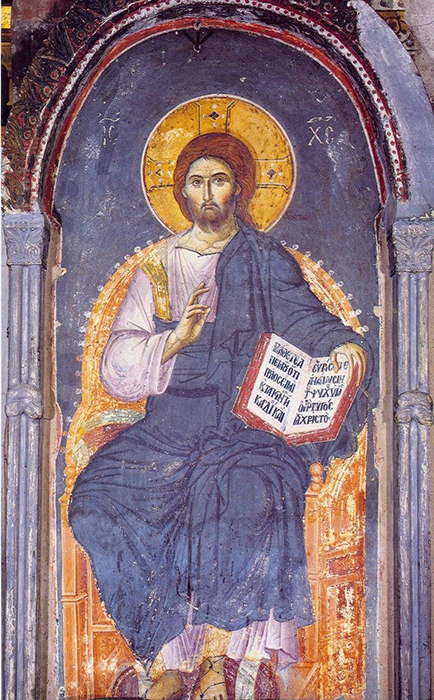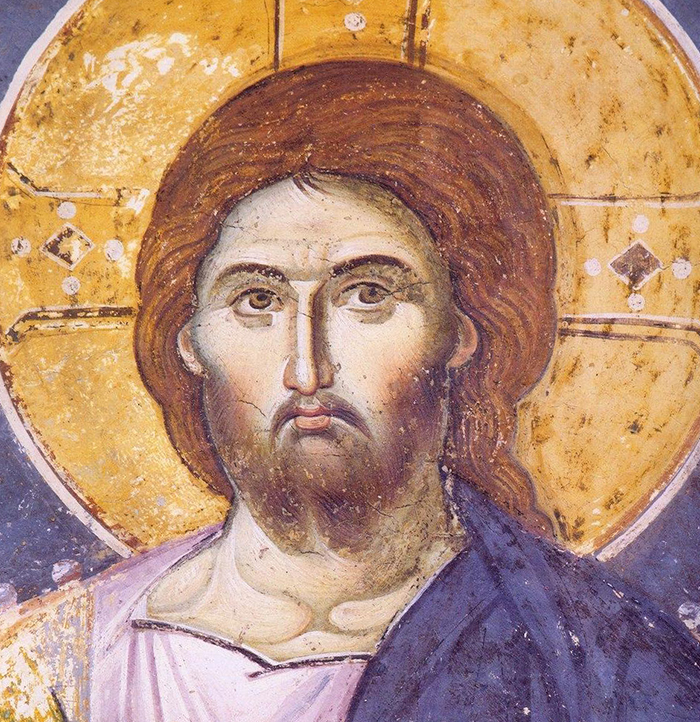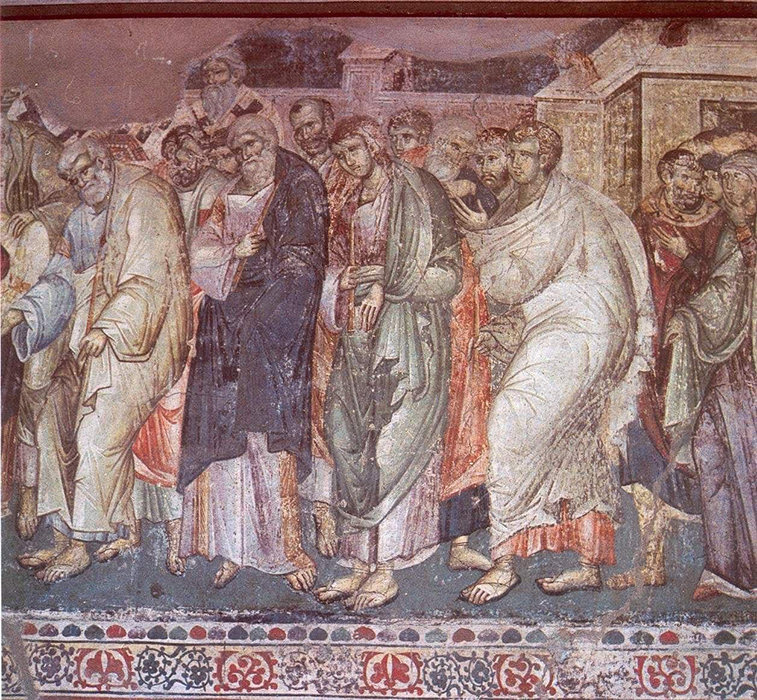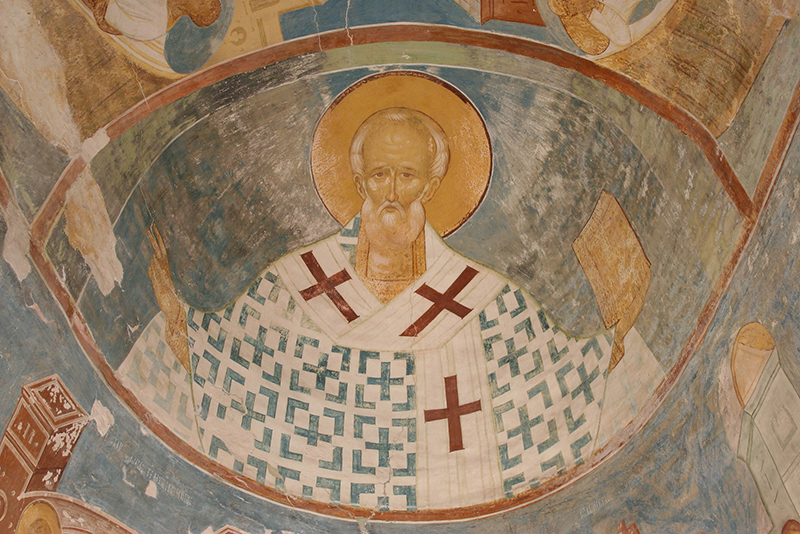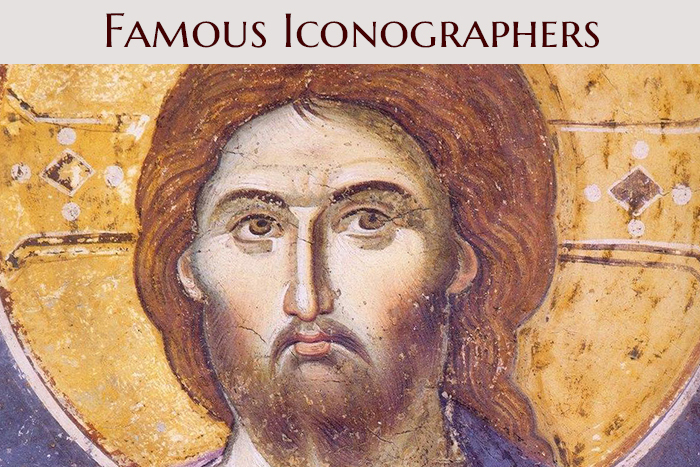
Not much is known about Manuel Panselinos. There are ongoing disputes about whether he was a real person or just a collective image. Nevertheless, we can conclude from the book by Dionysius of Fourna (18th century), an icon painter from Athos, titled Painter’s Manual, that Manuel Panselinos hailed from Thessaloniki and worked on the Holy Mount Athos, making frescoes and icons of such high quality that he surpassed all previously known artists. Dionysius himself admits that he learned the art of painting by imitating the “brilliant Manuel Panselinos”.
Thessaloniki was the center of Greek culture during the first Palaiologos period (13th-14th centuries). It was the period of the Byzantine Empire’s decline, but the vitality of the Byzantine culture was so great that the final literary and artistic revival could take place even amidst general decline. It was in Thessaloniki that the Macedonian school of icon painting was born, notable for its realistic approach to painting figures, as well as for capturing the inner world of the depicted persons and their feelings. It influenced the development of icon painting as a whole. It paid particular attention to the composition of the background and landscapes.

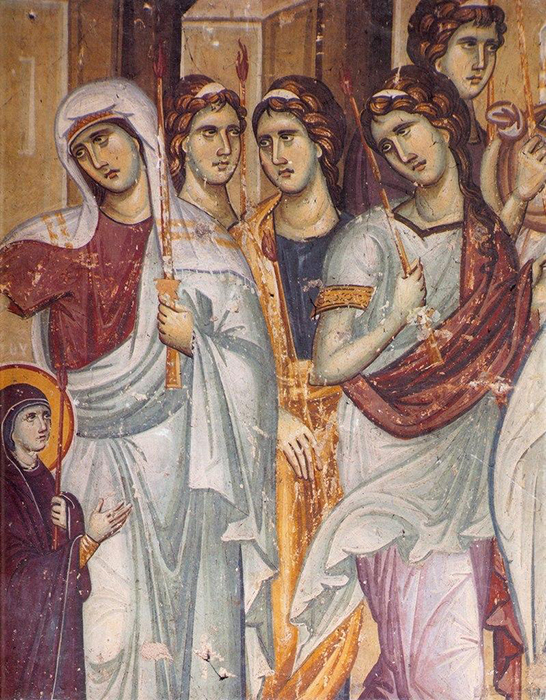
Manuel Panselinos was the main representative of this school. Presumably, he lived and worked in the late 13th – early 14th centuries, and is credited with painting the Dormition Cathedral of Protaton in Karyes, the Vatopedi Monastery, frescoes in the main churches of Pantocrator and the Great Lavra, as well as icons and other images in other monasteries of the Holy Mount. When researchers compared the painting techniques used in the Basilica of St. Demetrius in Thessaloniki with those of the Cathedral of Protaton, they found striking similarities and concluded that Manuel Panselinos had painted the basilica as well.
One of the main characteristics of Manuel Panselinos’s painting are the narrative nature of the scenes, the subtle rendering of movements and the accurate representation of body stature. Take, for example, the scene of the Prayer on the Mount of Olives: the sleeping apostles are very realistically portrayed in relaxed positions, but the Apostle James sits in the center, anticipating the pain of the imminent betrayal of Christ by Judas with a frozen expression on his face. He is contrasted with all others who are asleep. Although the fresco itself seems to convey a sense of tranquility, the drama and tragedy of this moment can be sensed in it.
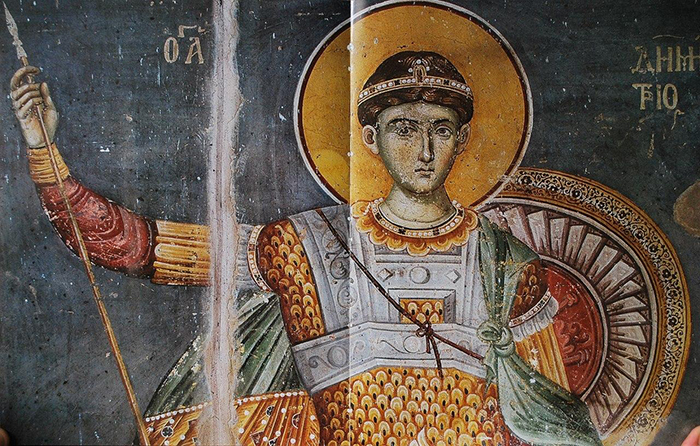
Manuel Panselinos employs a rich color palette. All his lines are clear and expressive.
The Protaton frescoes are a reflection of a conscious desire to revive Classicism in Byzantine art in conjunction with the spirituality of Christian society. Panselinos succeeded in doing so: he introduced beauty and harmony to his paintings, while retaining their form and content.

The classicism of this Palaiologos period is due to Panselinos’s interest in the use of ancient Greek prototypes in composition, depicting body figures, folds of clothes, etc.. A vivid example of this is the depiction of the group of the Apostles in the scene of the Dormition of the Virgin Mary. Unlike other scenes, the expression of the Apostles’ pain at the Dormition of the Mother of God is conveyed by the unstrained position of their bodies and their sad concentration, reminiscent of some ancient bas-reliefs on tombstones.
The depiction of the entire group of the apostles on the right side of the Mother of God’s deathbed while the angels and mourning women are depicted on the left was also a distinctive feature of this Dormition fresco: the apparent hierarchy largely correlated with the regulations of monastic life on Athos.
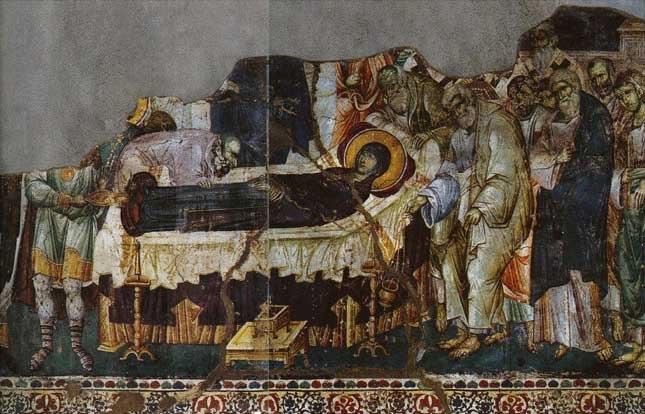
It is worth noting that the works by Manuel Panselinos reflect the key characteristics of the very essence of classicism. His paintings explicitly observed the balance and symmetry of composition, while the bodies of the characters were portrayed in a sculptural manner, with appropriate attire.
The icon painter used some time-daring compositions for some frescoes, depicting minor characters in the center (Entry of the Blessed Virgin Mary into the Temple), which, according to researchers, predated the use of similar solutions by several centuries.
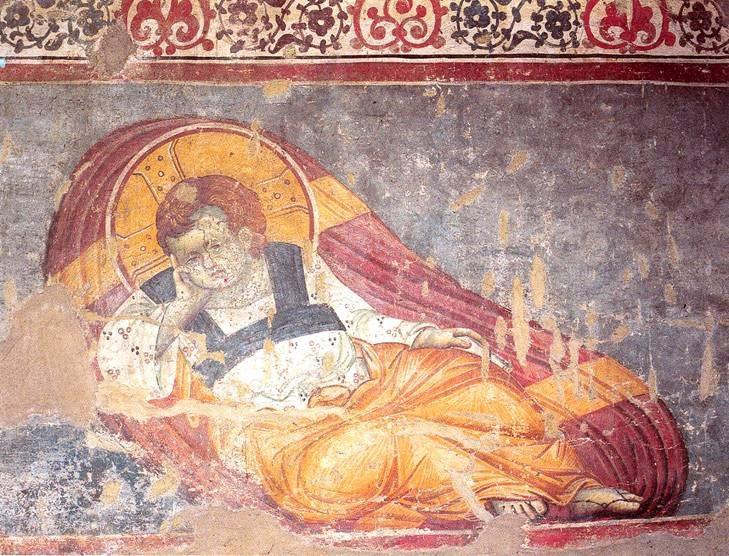
Another distinct feature of the paintings by Manuel Panselinos is their grandiose composition. The frescoes are multi-figured and occupy large surfaces. For example, the Dormition scene is about 6 m (20 ft) wide.
We are familiar with many frescoes painted by this outstanding artist: Christ the Pantocrator, St. Demetrius of Thessalonica, Martyr Artemius, St. John the Baptist.

The face of John the Baptist, painted by Manuel Panselinos, became the central image of the Macedonian school, and this image influenced all subsequent icons of the saint.
The artistic value of the Protaton frescoes and the outstanding creative personality of Panselinos influenced the subsequent iconographers so much that since the 18th century, written sources have attributed to Panselinos not only the Protaton frescoes, but also other frescoes on the Holy Mount Athos. Some researchers believe that every fresco that resembled Protaton decorations has been attributed to Panselinos by the Athonite monks since the seventeenth century. To this day, icon painters have chosen the images and faces by Manuel Panselinos as models.
